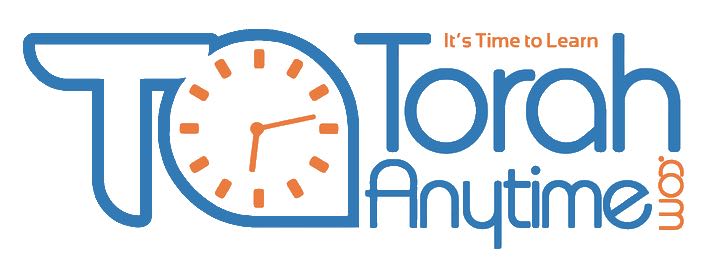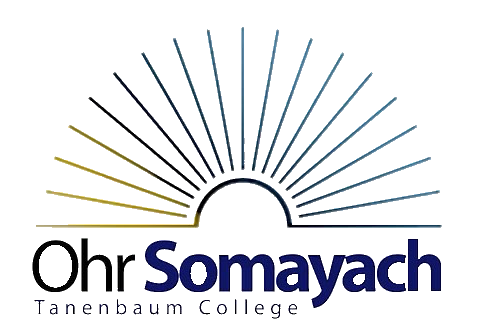Parshas Reeh
/This week, my family and I will celebrate the tenth anniversary of our arrival to Yerushalayim. It’s hard to believe it’s ten years already. The first time I came was in the winter of 1969, a year and a half after the Six Day War. Many places were surrounded with barbed wire with signs warning against land mines. The Jewish Quarter was still in shambles and everyone entered Damascus Gate without fear. “Intifada” was an Arabic word that hadn’t yet entered into Hebrew. As a child, I walked with awe and wonder, trying in my own childish way to connect the stories I had learnt in Yeshiva with the reality before me.
In 1975 I came to Yerushalayim to learn in yeshiva. Back then it wasn’t just something you did; it was something that you had to really want to do. The comparative luxuries we have today were non-existent. Today I see students emailing their parents twice a day and carrying cellular phones, just in case their parents or friends should need to get in touch with them “right away”. I manage to elicit gasps when I tell them that I spoke to my parents just three times that entire year. Once when they called me on my birthday, once when I got hepatitis and once when they told me to come home for Pesach because I had hepatitis. That was it.
Eating out on important occasions was at the local falafel shop and soda was viewed as a luxury item. And even then it was Tempo Cola. That was a drink so bad that the company actually bragged about it. “You want taste, drink Coca Cola. But if you’re really a tough Israeli, Tempo Cola. We don’t even try to taste good”.
During my free time I would wander through the back streets of Mea Shearim and the Old City, always discovering a new twist and turn along the byways. I remember when they first discovered the Cardo Maximus, the major Roman thoroughfare. Walking through the old city then was even more of an adventure than today, because the #1 bus used to travel through Jaffa Gate and through the Armenian Quarter. If you happened to be in one of the tunnels when the bus came, you made a run for it or hid in one of the doorways, hoping you didn’t stick out too far into the street.
The funny thing is, I would never have done this in the neighborhood where I grew up. Granted, the Long Island suburban community was hardly a historic district, but I felt that I never truly belonged there. In Yerushalayim, every alleyway, every stone seemed like an old friend. Somehow I knew this was home.
But this is supposed to be an article on the Parsha and not an “I Remember When” column or an ad for the Aliyah Department of the Jewish Agency. What do these remembrances have to do with Parshas Reeh?
Since we are asking questions, there is something slightly strange at the beginning of the Parsha. It opens with seven posukim that appear to be out of place. Hashem tells the B’nei Yisroel that He will give a brocho to those who listen to the Torah and follow the Mitzvos and a curse to those who don’t. He then goes on to specify where the brocho and klalla will take place. The brocho will be on Har Gerizim and the Klalla on Har Aival. That’s the end of the story. In three weeks from now, when we read Parshas Ki Savo, the story will continue. We will be told how the whole procedure works. What the blessing and the curse consists of, where the people stand and what they respond.
The question is obvious. Why not put the whole parsha together in Ki Savo instead of breaking it in half. Why in Reeh do we give the directions to the mountains and leave it at that?
I would like to suggest the following. Immediately after the directions to the mountains, we are told that when we come to Eretz Yisroel we should destroy all the places sacred to Avodah Zarah. We should also be careful, the Torah warns not to do this to Hashem. All the meforshim are troubled by this possuk – would anyone need a mitzva to tell them not to destroy the Bais Hamikdash? Today perhaps, when the Israeli government is the only country in the world that permits grave desecration it might be necessary, but back then? Parenthetically, I heard years ago that the reason Hashem gave the Har HaBayis to the Moslems is because they are the only ones with the will to protect it from the Israeli archaeologists.
But back to our problem. The Kli Yakir has a fascinating approach. We see, he explains, that the ovdei Avodah Zarah had many places sanctified to their deities. But, we are different. We have only one place, the place Hashem will show us, the place that has been established as the rendezvous spot since creation – Yerushalayim. Only there, Hashem warns us, can you bring your korbonos, can you do your avodah and come close to Hashem. That is what the possuk means, don’t do this to Hashem. Don’t try to establish a whole lot of different places. For us there is only one place. That’s Yerushalayim.
Maybe that’s what I felt when I came here. I knew I was in a place that wasn’t just another interesting place. London was an interesting place to visit, as were Los Angeles and Toronto. I imagine the Orient is fascinating and I’ll be traveling to South Africa at the end of August. If I make it back, I’ll tell you about it. But Yerushalayim isn’t a place to visit. It’s a place to be. I guess I’ve been here a long time because whenever my wife and I leave Yerushalayim we’re always amazed how the rest of the country looks like Israel. But Yerushalayim is obviously someplace else.
There is a power to a place, for good or bad. There are places in Yerushalayim I can’t travel to because they have deteriorated so badly in spiritual terms. The parsha tells us that Eretz Yisroel could have a town that becomes so rotten that it has to be completely destroyed and must remain forever a mound, a Tel. There is a power here that can be twisted for evil. But, as Rashi explains Yerushalayim can never become an Ir Hanidachus. Because Yerushalayim isn’t some individuals place to do what he wants, it belongs to all of Klal Yisroel. And it is the responsibility of all Klal Yisroel to maintain it as a holy city.
So maybe Parshas Reeh is about place. I know, there are the chagim, but as the Ramban explains the Torah repeated it here to tell us that everything we have to do, all the korbonos we have to bring, has to be in Yerushalayim. So when we get to Ki Savo, the parsha that deals with brocha and klala, we’ll discuss what we do when we get to Har Grizim and Har Aivel. But in Parshas Reeh we have to know that if you’re going to Eretz Yisroel, it is a place of Brocha and Klala, where there is no room for being wishy washy or undecided. There can be no fence straddling – you’re either on the mountain of curse or the mountain of blessing. You’re in an Ir Hanidachus, Chas Veshalom or Yerushalayim Ir Hakodesh.
We have to know that our golus has taken us to some beautiful, exotic and prosperous places. But for a Jew looking for kedusha, there is only one place for us - Yerushalayim. Those of us who have the zchus to live here, have the responsibility to live up to its’ standards. Those of us who don’t, have the responsibility to help maintain its’ Torah and kedusha.
Good Shabbos





